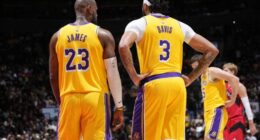I’m having lunch with my 87-year-old grandmother one afternoon and while I’m trying my best to catch a playoff game between the OKC Thunder and Memphis Grizzlies on the tube, she’s trying her best to engage me in conversation any which way she can.

She asks me, “Who pays the players?” I tell her, “The owners do.” She looks up at the screen half-satisfied and follows up with, “Where do they get the money to do that?” I took a sip of my drink, realizing this conversation wasn’t going to end until she got it and said, “Well, whatever money they make from ticket sales, merchandise, television rights and sponsorship.”
Then she had an epiphany.
“So then what if they can’t fill the stadiums?” she continued. “Then what? They don’t make any money? That doesn’t seem like a very good business.”
Of course, we didn’t get into the whole big market versus small market issue because there’s only so much info I can spew out at her without it going in one geriatric ear and out the other. But for someone who’s never watched a professional basketball game from start to finish in her life and couldn’t pick David Stern out of a lineup or possibly be familiar with the words “collective bargaining” or “contraction,” she was on to something.
Which leads me to my next point—if she could easily rationalize what has divided owners and players for decades, there’s likely to be an easy solution to the problem. However, when the problem involves money, few things are ever simple.
NBA owners are watching how the NFL labor talks are playing out like hawks. Their plight is a little different than in pro football however. In this case, the players aren’t disputing the numbers the owners are generating like they have in the past. They don’t dispute the fact that owners say they’re losing around $300 million.
Next: Talks will resume despite both sides still divided on the issues
[phpbay]Los Angeles Lakers, 3, “”, “”[/phpbay]







